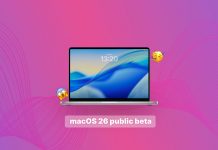With all the other news today, Apple slipped out version 3.5 of Apple Remote Desktop.
The new update brings Lion compatibility as well as some new features, including the ability to log into a separate session than the session the local user is in. This allows sysadmins to log into a Mac and work without the local user — sitting at the Mac — ever knowing it.
Improvements
- Provides compatibility with OS X Lion.
- Improves stability of Remote Desktop.
Lion screen sharing
When using Apple Remote Desktop to control a client machine running Lion, you may share the current user’s session or log into a separate session which will not be shown on the user’s display and will not interrupt the current user.
The Screen Sharing service is enabled in the Sharing Pref pane by turning on either Screen Sharing or Remote Management. In Lion, the service under which Screen Sharing is enabled affects the authorization required for sharing the display.
If the Apple Remote Desktop administrator authenticates with a name that is different from the user logged on at the remote computer, the following applies:
- If the service was enabled by turning on Screen Sharing, the screen sharing user is presented with the option to request sharing access from the user logged on at the display.
- If the service was enabled by turning on Remote Management, the screen sharing user can simply choose to share the display.
- The screen sharing user can always choose to log in to their own session.
If an Apple Remote Desktop administrator authenticates with the same name as the user logged on at the display then they will share the display. This is equivalent to how screen sharing works in earlier versions of Mac OS X.
If the remote computer’s display is at the login window, the Apple Remote Desktop administrator will simply share the display. This is equivalent to how screen sharing works in earlier versions of Mac OS X.
A third party VNC viewer will always be connected to the login window. If the login window is not on the display, a new login window is started that is not shown on the display. The screen sharing user can then log in with any valid account on that computer.
Source: Apple Support







